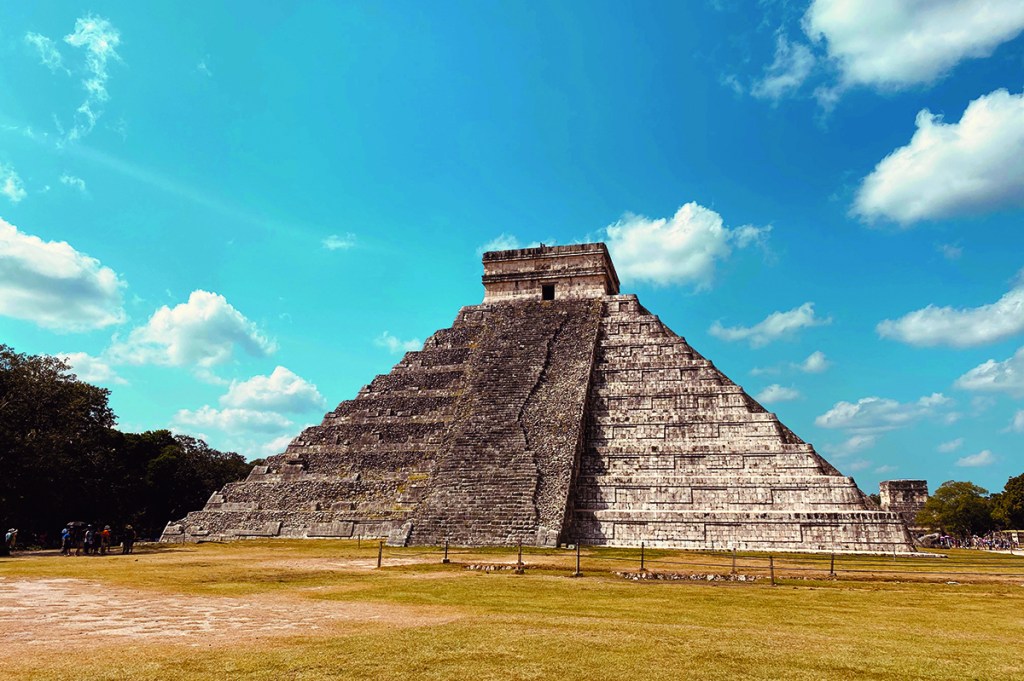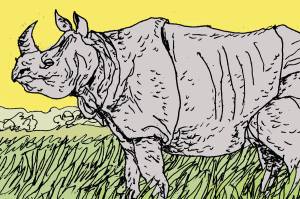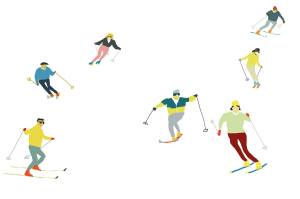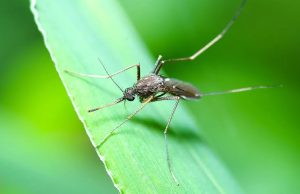I met a traveler from an antique land…” Visiting the Mayan ruins in Yucatán, it’s hard not to think of Shelley’s immortal “Ozymandias.” Proud though it once was, little remains of that extraordinary civilization.
I began my encounter with the Maya at Chichen Itza. Gazing up at the spectacular faceted pyramid which dominates the complex, I tried to imagine myself back a thousand years, negotiating the precipitous staircase that leads straight up the sheer face to the chamber at the top.
I wondered at the ballpark, as big as a football field, and the domed observatory and labyrinthine temples and studied the intricate carvings which scrolled across walls and pillars and stelae. There were figures of warriors and skulls, of jaguars and eagles with exuberant feathers, clutching human hearts in their massive claws. The motif of death was inescapable.
All this was once a palatial complex, the capital of a city-state and the heart of a thriving culture at its peak between about AD 600 and 1200. But surrounded by lawns full of sightseers posing for selfies and hawkers selling whistles that imitated a jaguar’s snarl, it was hard to conjure up that extraordinarily different way of life and thought that had evolved entirely without outside influence.
I was eager to learn more. But I also wanted to get a taste of modern-day Yucatán, not just see relics of its past.
A gentle drive across scrubland along a flat tree-lined road brought me to the state’s capital, Mérida, a pretty, laid-back town lined with pastel-painted buildings. In the evening I joined the crowds in the Plaza Grande as the sun set gloriously behind the palm trees. Some of the faces around me were sculpted, exactly like the Mayan carvings, others were rounded, but all were relaxed and friendly, full of the joy of life. Little children gathered around to have a look at me.
Later I dined at La Chaya Maya — the Mayan Teahouse — built around an open courtyard bursting with tropical foliage, serving Yucatán dishes like tikin xic, a whole fish in an orange-flavored sauce, wrapped in a banana leaf, and relleno negro, a fabulous dish of turkey with black beans and chilis.
A few days later I headed south through picturesque towns of narrow streets and painted houses where hammocks hung inside open front doors and rickshaws driven by motorbikes or bicycles puttered up and down. Little by little the flat plain began to give way to hills.
At the once great Mayan city of Uxmal, the monuments are set in spacious glades. The spectacular curved flanks of the Pyramid of the Magician loomed before me. It was magical, not stepped but broad and rotund, as impenetrable as a fortress, solid and squat. A bird perched on the top, silhouetted against the sky, and spiny-backed iguanas basked in the sun, barely visible against the rocks.
David, my guide for the day, pointed to the door to the inner chamber, right at the top, surrounded by a fretwork of interlaced geometrical patterns.
“Look up there,” he said. “Can you see Chaac, Chaac the rain god?”
I looked and saw that the windows formed square eyes, a protruding beam a nose and the doorway itself a gigantic grinning mouth. With my eyes opened, I saw him everywhere — his gargoyle head protruding from cornices, his great hooked nose jutting out from the corners of buildings and his tooth-filled mouth in the intricate carving of the walls. Crawling across the facades were startlingly realistic tortoises and feathered serpents with dragon heads, as if all the creatures of the jungle had swarmed out and been frozen in stone.
I plodded on in the heat through quadrangles walled with temples and lined with cells, enjoying the exquisite detail of the carved latticework. In the courtyard of what had been a palace was a throne formed of two jaguar heads facing in opposite directions. This whole building, said David, had formed part of an astronomical observatory. There was a pyramid three miles away precisely aligned with it, from which Mayan astronomers would have observed Venus setting over the palace once every eight years.
Like all these cities, Uxmal too had a ball court where the Maya played their famous ball game, tossing a rubber ball through a stone ring fixed high on the wall, using only hips, shoulders or heads, never hands or feet, which must have required extraordinary skill. To give an extra edge to the game, sometimes the winners, sometimes the losers were sacrificed to feed the ever-thirsty earth gods with blood. These stone plazas with their great edifices were where the rich and powerful lived, playing their games and performing their ceremonies. Ordinary folk lived in earthen-walled, thatched-roof houses, not so different from those I saw throughout rural Yucatán.
That evening I arrived in Campeche, where the conquistadores first set foot on Mexican soil, a charming town of pastel houses and cobblestone streets. I sat on the fortified ramparts and watched as the sun sank into the sea.
The next day I had a different guide, the enthusiastic and very knowledgeable Enrique, to take me to the Mayan site of Edzna. He was full of wonderful facts such as that the rulers embodied the gods, whose job it was to feed the people. Their heads were flattened from birth, and they wore quetzal feathers as headdresses, so that they looked like giant ears of corn — maize, the all-important crop. They were taller than everyone else and fat. Archaeologists have found the huge rings they wore on their tubby fingers. It was a journey back in time, a step into another world.
Back in Campeche I spent a couple of hours in the Museo de Arquitectura Maya, tucked into a corner of the city walls. Besides the many stelae there, there was a hauntingly realistic jade mask, found, so the inscription read, in Calakmul, the greatest, most powerful city-state in the entire Mayan world. I realized then and there that I had to go.
It was a long drive down the coast and inland through a succession of little towns. After a night in an ecolodge I set out on the last lap of my journey. Another half-hour’s driving brought me to a sign marking the entrance. But there were no pyramids. The road plunged straight into the jungle. I drove deeper and deeper along a track which twisted and turned, with towering trees pressing in on each side. Leaves and branches intertwined overhead, casting the road into shadow. It felt like a rite of passage, like passing through a portal into another world.
An hour and a half passed before I emerged into a clearing. A path led off through the trees. I walked through glades mottled with sunlight and blissfully empty of people, then caught a glimpse of moss-covered stelae between the trees. Behind them a pyramid loomed, rising above the treetops like a giant iceberg in the ocean.
In the Mexican heat the jungle grows incredibly fast. In Calakmul it engulfed the ruins. Great trees grew out of the stones, roots twined around the rocks and lianas dangled from the branches. Black howler monkeys crouched overhead, giving strange unearthly barks. I half expected a jaguar to come stalking out of the jungle.
The gargantuan pyramid I was standing in front of, my guide Luis told me, is the largest and highest in the Mayan world, some 150 feet tall. In a nearby multiroomed structure, probably the palace of the ruling dynasty, archaeologists found the exquisite jade mask I had seen in Campeche adorning the skeleton of an important king, along with jewelry and other funerary offerings.
On the other side of the clearing was another pyramid, nearly as huge as the first. Here archaeologists made the amazing discovery of frescoes depicting ordinary Mayans wearing huge-brimmed hats, sitting cross-legged, cooking, eating, carrying water, all beautifully painted in a voluptuous playful style.
The stelae which rise here and there in the glades celebrate the kings’ triumphs. Most are badly weatherworn, offering only tantalizing glimpses of the words and figures once carved there, and many have had their facades sliced off and taken away to be sold. It’s fortunate that so many have been preserved in Campeche and other museums. Enough is left that we can read the records of the deeds of the kings.
Around the seventh century, apparently, Calakmul was a great city, home to 50,000 people, and the capital of the Kingdom of the Serpent’s Head. The glade was once the grand central plaza, paved with stone, with temples and palaces, a ball court and stucco-paved roads that radiated out to all corners of the kingdom. Here successive kings built pyramid upon pyramid, ever higher and higher, not for defense but to glorify themselves, to show off their power and splendor.
“‘Look on my works, ye mighty, and despair.’ Little beside remains…” All this disappeared long before the Spanish arrived. The people are still here, but they left the great cities behind, to be quickly swallowed by the jungle and only now rediscovered.
This article was originally published in The Spectator’s August 2022 World edition.


















